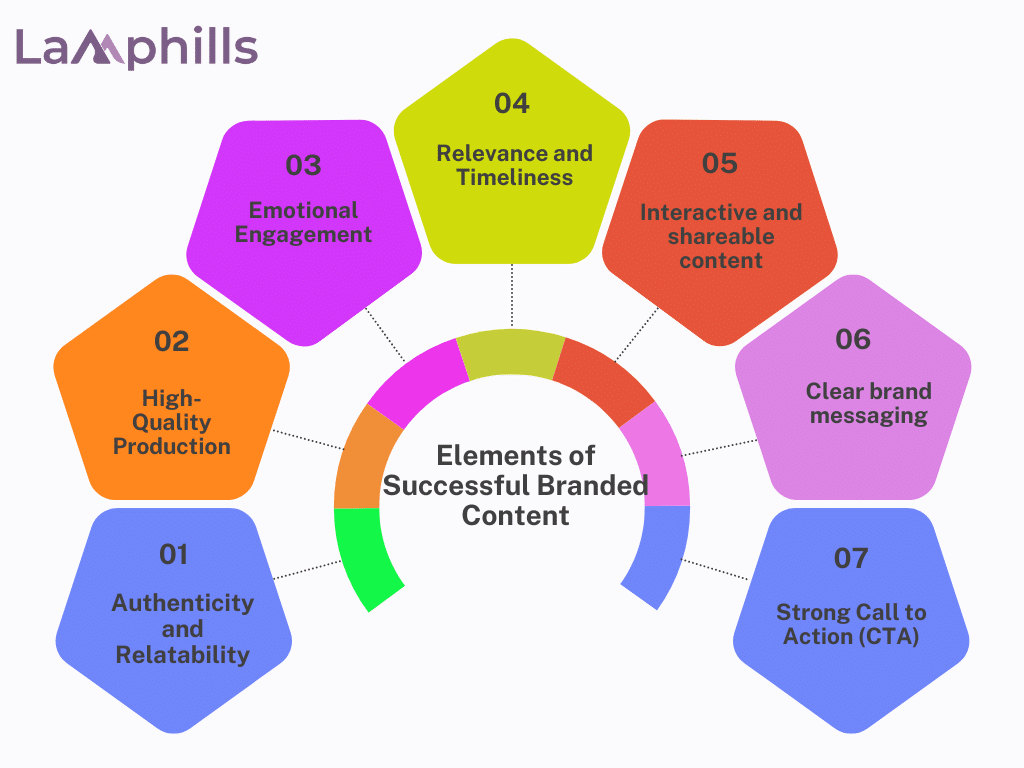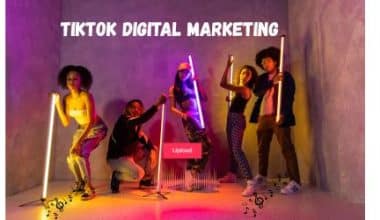When I first learned about branded content, I was both intrigued and apprehensive. How could combining storytelling and marketing result in an effective strategy that increases engagement and revenue? After researching the matter extensively, I determined that branded content is a money-making strategy that every marketer should be aware of.
What is Branded Content?
Branded content is, at its core, a marketing strategy in which a company develops content that promotes storytelling over straight promotion. Unlike traditional advertising, which focuses on selling a product, branded content tries to entertain, educate, and engage the audience while quietly incorporating the brand’s message into the story.
I have clear memories of my first successful branded content campaign. It was a series of short videos that told the personal tales of people who used our product in unusual ways. These stories hit home with our audience, resulting in a huge boost in interaction and purchases.
According to a Content Marketing Institute study, branded content leads to 86% higher brand recall than traditional advertising. This number alone demonstrates the ability of branded content to leave an indelible impression on consumers.
One of the reasons branded content is so powerful is that it overcomes the restrictions of traditional advertising. Branded content blends in smoothly with the user experience rather than disturbing it.
For example, Red Bull’s “Stratos” campaign, which featured Felix Baumgartner performing a record-breaking freefall jump from the edge of space, was more than just a promotion for an energy drink. It delivered an exciting story that grabbed millions around the world, encapsulating the brand’s adventurous attitude.
Key Takeaways
- Branded content emphasizes storytelling rather than direct promotion.
- By showcasing real-life stories and authentic experiences, brands can create a lasting impression that resonates with consumers.
- Branded content can be a low-cost alternative to traditional advertising.
- By focusing on creating valuable and relatable content, brands can increase user engagement, leading to higher interaction rates and deeper customer connections.
- As new platforms and content formats emerge, brands can expand their reach and adapt their strategies to maintain relevance and drive long-term growth.
Benefits of Employing Branded Content
Here are a few benefits of adopting branded content:
#1. Improved brand recognition
Using branded content is an excellent approach to generating brand recognition for a business since it plainly displays the name or emblem of the company that created it. Branded content can increase brand recognition by including company logos in images or films, creating phrases that customers can easily link with a certain brand, and providing engaging ways to interact with a company that may inspire people to remember the company.
For example, a childcare provider could produce a one-page infographic regarding pool safety and distribute it to local schools. If the schools email the infographic to parents, they will see the facility’s logo and name and start to link the brand with safety. When they decide to send their children to summer camp, they may consider the child care center because they are already familiar with the brand.
#2. Low cost
Since many social media and web platforms are free to use, creating branded content can save marketing teams money. For example, a company’s marketing team may pay to display a pop-up ad on a social media platform, but they can produce a post from their own account that promotes their business for free.
Saving money in this way allows a company’s marketing staff to develop more promotional materials and use more of their budget to fund other marketing initiatives, such as hosting events or distributing written materials.
#3. Concentrate on consumers
Branded content is often consumer-oriented because it may be displayed on platforms that the general public can easily access. This includes nearly every internet platform, such as company websites, social media platforms, content creation websites, and so on. Because consumers can easily locate and interact with branded content, marketing that leverages it usually reaches a large number of potential buyers. Marketing professionals typically aim to make branded content engaging and entertaining for customers to boost the number of users who interact with it by appealing directly to them.
#4. Potential for growth
Branded content is most commonly found online on platforms that operate via the internet. Because the internet is always evolving, new methods and kinds of content might emerge and gain popularity.
By attracting customers who use platforms other than those that the marketing team already uses, having new platforms to distribute branded content on can help increase the reach of a marketing campaign. For example, the proliferation of video-sharing websites has made it simple and economical for many businesses to post educational and entertaining content to a large audience.
Key Elements of Successful Branded Content

To develop effective branded content that connects with your audience and drives results, you must focus on six critical factors that go beyond simple narrative.
#1. Authenticity and relatability
Successfully branded content is genuine and relatable. Consumers today seek genuine stories that reflect their values and experiences. When generating branded content, it is critical to emphasize the human element by telling stories that mirror real-life circumstances and emotions.
In one of my efforts, we included actual customers sharing their success stories. This technique not only increased trustworthiness but also established a strong emotional connection with our viewers. The feedback we received was incredibly favorable, with many consumers stating how they recognized themselves in the stories.
#2. High-Quality Production
Investing in high-quality production is critical. The quality of production, whether in the form of a video, blog post, or social media content, reflects on the brand. A well-produced piece of content can considerably increase the perceived worth of the brand.
We previously collaborated with a professional video production team to develop a series of branded documentaries. The excellent production value drew our audience in and demonstrated our brand’s devotion to quality.
#3. Emotional Engagement
Branded content should provoke emotions, such as joy, nostalgia, enthusiasm, or empathy. Emotional involvement strengthens the link between the audience and the brand, making the content more memorable.
Example:
A campaign I produced featured touching stories of community assistance during difficult times. This strategy not only humanized the brand but also created a sense of camaraderie among our target demographic.
#4. Relevance and Timeliness
Content should be relevant to your audience’s interests and address current trends or challenges. Keeping content fresh and up-to-date is essential for maintaining engagement and relevancy in today’s fast-paced digital market.
Example:
We launched a series of essays and films about environmental sustainability during Earth Month. This timely content spoke to our environmentally concerned readership and connected with current global concerns.
#5. Interactive and shareable content
Creating interactive content, such as quizzes, polls, and interactive movies, can help increase engagement. Additionally, easily shareable content can broaden its reach and influence.
Example:
One of our most effective pieces of branded content was an interactive quiz that provided consumers with individualized product recommendations. It was widely shared on social media, resulting in increased traffic and conversions.
#6. Clear brand messaging
While narrative is important, the brand’s message should remain clear and consistent throughout the content. Subtlety is vital, but the brand’s ideals and benefits should still stand out.
Example:
In a series of lifestyle blogs, we gently blended our brand’s primary message of supporting health and wellbeing, making sure the content was both entertaining and consistent with our brand identity.
#7. Strong Call to Action (CTA)
A powerful CTA prompts the audience to take the next action, whether it’s visiting the website, subscribing to a newsletter, or sharing the content. A strategically positioned CTA can dramatically improve the impact.
Example:
After presenting amazing customer stories, we included a call to action that encouraged readers to share their own experiences on social media using a specific hashtag, building a community-driven campaign.
Read Also: Crafting CTAs That Convert: Perfecting the Press Release CTA for Explosive Growth
Adding Branded Content to Your Strategy
#1. Identifying Your Audience
The first step in incorporating branded content into your strategy is to define your target audience. Understanding their preferences, hobbies, and pain spots will allow you to produce content that speaks to them.
#2. Creating a Content Calendar
A content calendar is an effective approach to planning and organizing your branded content initiatives. A well-structured calendar offers a continuous flow of content, which helps to keep audiences engaged over time.
Leveraging Metrics and Analytics
Metrics and analytics are vital for determining the effectiveness of your branded content. Monitor key performance metrics (KPIs) like engagement, social shares, and conversion rates. These insights can help you fine-tune your strategy and optimize future campaigns.
The Use of Templates in Branded Content
A branded content template can help ease the content generation process while also ensuring consistency. A template can help you organize your thoughts, define clear goals, and track performance metrics. For example, our branded content template has areas for audience research, content ideas, production deadlines, and performance tracking. This tool has been really useful in ensuring a consistent content strategy and accomplishing our marketing objectives.
Branded Content vs Product Placement
Product placement does not communicate the same story as branded content.
While a product may be featured in a storytelling vehicle such as a television show or film, the tale is not about the product in any manner.
Product placement highlights the product by placing it front and center. Some branded content fails to highlight the product clearly. Or at all.
Branded Content vs Content Marketing
The phrase “content marketing” refers to the creation and distribution of various sorts of content to increase brand exposure and interest.
Branded content could be part of a brand’s overall content marketing strategy.
Branded Content vs Traditional Advertising
Traditional advertising seeks to market a product or service directly through banners, pop-up ads, TV commercials, and other means.
Here is an example of traditional advertising.
However, branded content may not even mention the product or service. Instead, focus on a story, concept, or value that customers will eventually associate with your product or service.
Seven Examples of Branded Content
Here are seven examples of effective branded content.
#1. Dove
Dove’s Real Beauty ad challenged beauty norms and elicited emotional responses. They challenged the limited conceptions of beauty that conventional advertising promotes by showcasing real women in all of their diversity. This approach was more than courageous; it was a strategic genius, fostering deep ties with its target population and going beyond product placement to convey a story that we could all relate to.
#2. Red Bull
Felix Baumgartner’s plunge from the stratosphere was more than simply a supersonic freefall; it was also a Red Bull branding event that would go down in history. By funding this death-defying action, they avoided having to market items directly; Felix did it for them, wearing the logo as he smashed both actual and figurative sound boundaries. It demonstrated that branded content can be more engaging than any banner ad when brand values take center stage.
#3. The LEGO Movie
The Lego Movie transformed plastic bricks into blockbuster hits while also serving as one of the most successful branded content initiatives ever created. The film flawlessly integrated humor, heart, and product promotion, making it feel like part of the enjoyment rather than an interruption.
#4. Apple TV Plus
When Apple introduced its TV service in 2019, it did not follow the typical high-profile advertising strategy. Instead, it produced The Morning Sitcom, a sitcom about a talk show that addressed the daily problems of a modern workplace while effortlessly incorporating the most recent Apple devices into each episode.
#5. Birkenstock
Birkenstocks may not be the most visually appealing footwear, but their comfort and durability have gained them a devoted following worldwide. But have you ever wondered why they appear like they do? The brand collaborated with The New York Times to create a three-part documentary called ‘Ugly for a Reason’ that delves into this very subject. Their distinct storytelling strategy incorporated expert insights from renowned scientists and foot health specialists, interactive graphics, and real-life experiences from loyal consumers, all geared at teaching people about foot health and supporting sustainability.
#6. Subaru
The Subaru #meetanowner campaign is an excellent example of using branded content to improve brand image. In an innovative initiative, the company worked with influential customers to promote its brand. The message was clear: Subaru automobiles are intended for folks with an adventurous spirit. This marketing strategy’s impact was considerably increased by portraying actual clients—adventure enthusiasts and thrill seekers.
#7. Cisco
Cisco faced the difficult task of humanizing its brand in an industry that is frequently seen as impersonal and disconnected from daily life. To tackle this difficulty, Cisco launched the #WeAreCisco campaign, which highlights the personal experiences of its employees around the world.
One such anecdote came from a pregnant employee, who highlighted that Cisco provides separate parking spots for expectant mothers by uploading a picture with another pregnant coworker, demonstrating how many people benefit from this compassionate gesture. This allowed potential customers and stakeholders to gain insight into Cisco’s operations through authentic narratives.
If there is one thing businesses can take away from these seven examples, it is that branded content has enormous potential when done well. It’s not just about selling things or services; it’s also about crafting a tale that resonates with your target audience while tastefully incorporating your brand into the narrative.
Branded content development has been proven effective since emotions play an important role in attaching us to what we watch or read online.
Remember the mantra: tell, don’t sell.
Create a story that is so compelling that your audience will not realize they are being targeted until they are completely absorbed in your universe.
Why is Branded Content Effective?
Branded content is beneficial because it engages the audience on a deeper level, promoting brand loyalty and memory. It adds value by entertaining or educating consumers, making the brand message more memorable.
Conclusion
Branded content is a powerful strategy that combines storytelling and marketing to create interesting and memorable experiences for customers. By focusing on authenticity, high-quality production, and analytics, brands may drastically improve their marketing efforts and achieve greater outcomes.
So, are you ready to include branded content in your marketing strategy? What unique stories will you tell to engage your audience and increase your brand’s visibility?
Related Articles
- Content Marketing for Startups: Growth Hacking Secrets for Explosive Traffic
- The Future of E-commerce Content: Trends and Strategies You Can’t Afford to Ignore
- Short Form Content Mastered: Insider Secrets for Creating Viral, Money-Making Posts
- The Ultimate Guide to Building a High-Performance Content Creation Workflow
- The Biggest Content Personalization Mistakes You’re Probably Making (And How to Fix Them)






